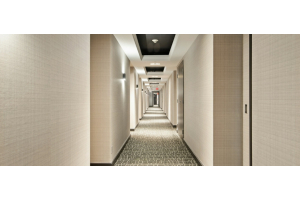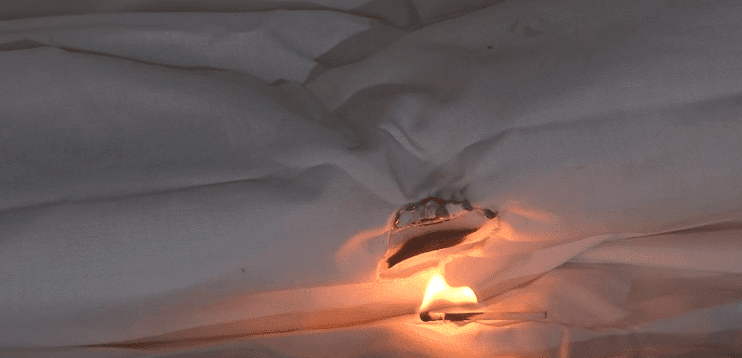We use cookies to give you the best possible experience. To accept cookies continue browsing, or view our Cookies Policy to find out more.
7 Ways To Reduce The Risk Of A Care Home Fire

Most people are aware of the fire risks in and around their homes. Many of us have a working smoke alarm, we probably don’t leave candles or flames left burning unattended or overnight and some may even have an evacuation plan. But can the same be said for a care or healthcare establishment?
In 2011, a report by The Guardian found that 135 care homes were found to be the subject of enforcement action by fire and rescue services and many included serious hazards such as inadequate alarms, blocked escape routes, damaged or dangerous equipment and untrained staff.
It’s commonplace within a healthcare environment for the residents to have additional needs. Some may have restricted movement and may rely on wheelchairs whilst others rely on medication to assist with their long-term health conditions, such as medical oxygen. Designed to look after those who are less able, elderly or infirm; care homes are first and foremost living environments for their residents and so need to be adapted to provide a functional, practical yet comfortable setting for the people who stay there.
Investing in fit-for-purpose, specialist, fire-retardant fabric - including bedding, pillows, and curtains - can all help to greatly reduce the risk of a fire in a care home. But what else can be done to ensure the risks of fire are minimised?
Ensure You Complete a Fire Risk Assessment Annually
A fire risk assessment is required by law and should be reviewed annually to ensure it is still relevant to the premises. During the assessment, you should: identify any people who may be at risk, evaluate the risks within the establishment and, where possible, remove them, identify any potential hazards, prepare an emergency plan and provide training to staff members. Your local fire and rescue authority may inspect your property and ask to see the fire risk assessment; if they are dissatisfied with the outcome of the assessment they may choose to give you an enforcement notice, or in very rare cases, a prohibition notice which can close part, or all, of the property.
Create a Comprehensive Evacuation Plan
You should create a comprehensive evacuation plan and give this to all staff members as well as making it clearly visible around the premises. The plan must show that you have a clear pathway to all escape routes, emergency lighting where needed as well as emergency doors that can open quickly and easily. Your plan must also take into account special arrangements for people with mobility difficulties and you should have enough exits to ensure everyone is able to leave safely. As the degree of mobility of each resident may be different, a delayed or progressive evacuation plan may need to be adopted which involved moving a number of residents at one time. For more information on creating a care home evacuation plan, read this article from Fire Safety Services.
Test Equipment Regularly
All equipment inside your care establishment should be maintained and tested on a regular basis. Be sure to check all of your safety equipment including lighting, doors, fire alarm, smoke alarm and fire extinguishers as well as other hazards including electrical equipment, sockets, and cables. As care home laundries are usually located in the basement and therefore can affect any escape routes above, all machinery must be inspected, cleaned and maintained on a regular basis to prevent the possibility of it catching fire.
Practice Good Housekeeping
Never block fire exits with bins or skips and ensure they are at least six metres away from the building. This avoids any serious damage if they are set on fire and prevents the fire from spreading into the premises. Ensure ignition sources are always kept away from flammable materials and store aerosols or medical gases in a locked cupboard, where possible. In larger premises with kitchens, follow the same rules you would as home; don’t leave your cooking unattended and stock the kitchen with a fire extinguisher and blanket should the worst occur.
Create Adequate Storage Space
As with homes, many healthcare establishments offer a divine living and reception space, however, some have the tendency to use one room for storage. When using a storage room, make sure the entrance ways and pathways are clear of any obstacles and take care when filling the room. Don’t pile electrical equipment, storage or halogen heaters against combustible materials (even in hot weather or if turned off)
Take Extra Care With Medical Oxygen
In establishments where medical oxygen is used, take extra care and precaution in these areas. For any room where oxygen therapy is used, designate it as a ‘No Smoking’ area and prohibit cigarettes, matches, lighters or e-cigarettes from the surrounding area. The room should also have adequate ventilation and all staff should be properly trained. Oxygen cylinders should be kept away from any sources of heat, fire or naked flames and should be stored to ensure they are not at risk of falling over or being contaminated by other products such as oil and grease. #
Keep reading for more on the dangers of fire mixing with medical oxygen in the form of two videos.
Consider a Different Smoking Policy
Following on from the previous point, consider implementing a different smoking policy within the care home walls and bedrooms. Instead, why not promote a safe smoking policy with designated smoking areas around the building instead? This may not work with all residents, however, as some may have mobility issues and will not be able to reach the outside areas but by promoting a safer smoking ritual to the other residents, risks of a care home fire can be greatly reduced.
Care Home Fire Risks for People With Additional Needs
In partnership with West Midlands Fire Service, we’ve created a number of videos aimed at highlighting the potential risks that fire could cause within a care home setting.
In the videos shown below, West Midlands Fire Service show the effects of a cigarette in close proximity to medical oxygen. Medical oxygen should never be used around a naked flame, cigarette or even e-cigarette and care must be taken when using oxygen therapy alongside a qualified professional.
Our specialist fire retardant range of bedding is used in the video which proves just how important fire retardant fabrics are in a care home setting. Although the oxygen and naked flame can cause serious damage, the fabric used will safely stop the spread of fire from one room to another by extinguishing it after a few seconds of contact.
Utilising our long-standing relationship with fire and rescue services up and down the UK, we are proud to have produced a wide range of fire retardant fabrics from bedding to pillows; all manufactured to the highest standards and exceeding British Standards performance criteria.







